Banknote Lookup – Identifiers and Symbols
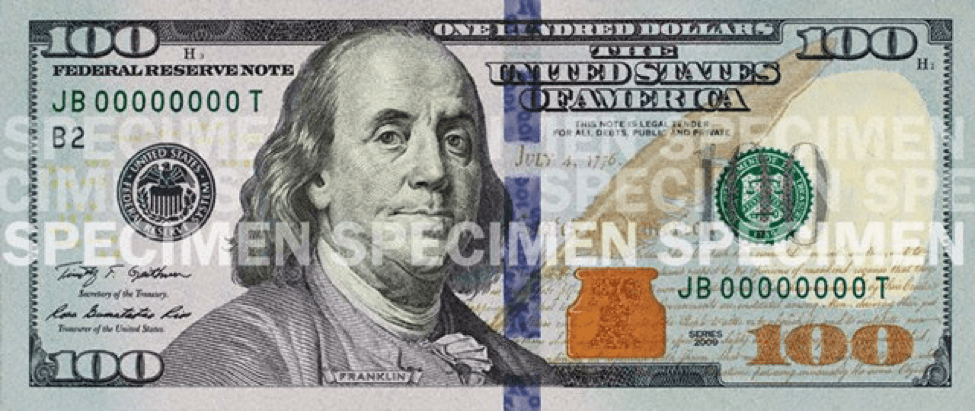
Each Federal Reserve note includes identifiers that provide information about the note, such as designating the year in which the note’s design was approved. Learn about these note identifiers by clicking on the image below.
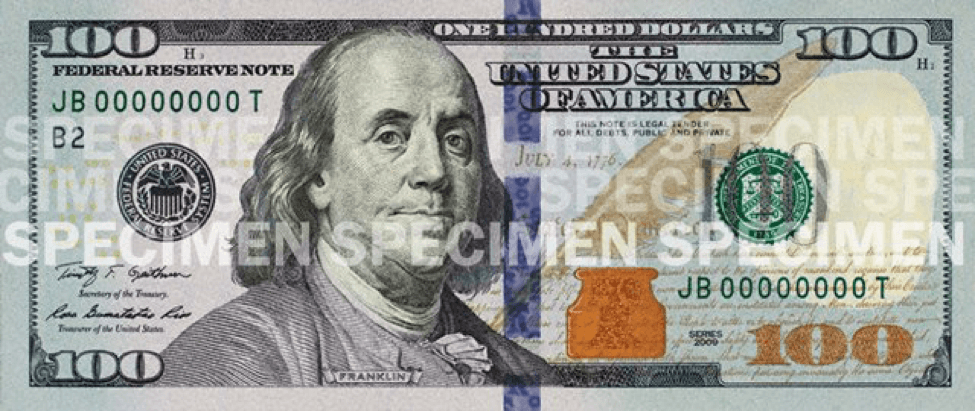
Serial Number
A unique combination of eleven numbers and letters appears twice on the front of the note. Each note has a unique serial number. The first letter of the serial number corresponds to the series year.
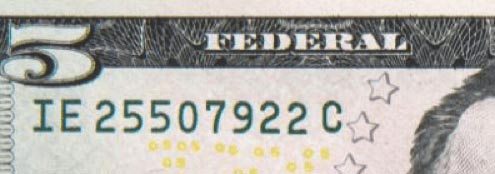
| YEAR | SERIES LETTER | YEAR | SERIES LETTER | YEAR | SERIES LETTER |
|---|---|---|---|---|---|
| 1996 | A | 2003A | F | 2009A | L |
| 1999 | B | 2004A | G | 2013 | M |
| 2001 | C | 2006 | I | 2017 | N |
| 2003 | D | 2009 | J | ||
| 2004 | E | 2006A | K |
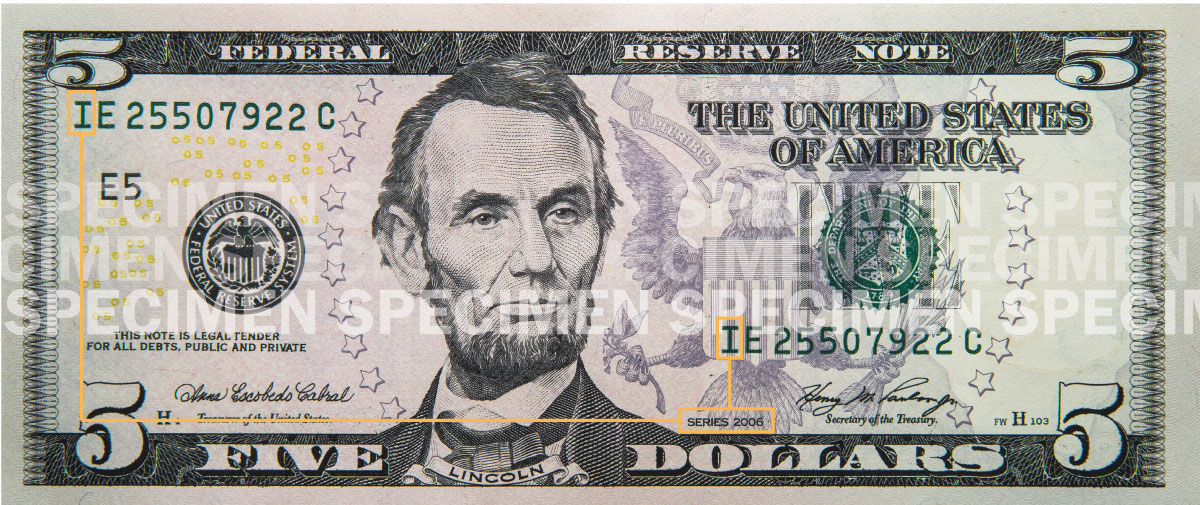
A “star” suffix is used to identify notes that serve as replacements during the production process. If you’d like to learn more about the U.S. currency production process, please visit https://www.moneyfactory.gov/uscurrency/howmoneyismade.html.

Series Year
The series year indicates the year in which a new design was approved by the Secretary of the Treasury, or the year in which the signature of a new secretary or treasurer was incorporated into the design. Capital letters following the series year appear when there is a significant change in the note’s appearance.
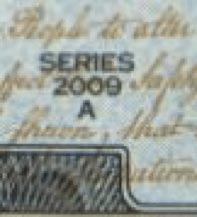
Federal Reserve Indicators
For denominations $5, $10, $20, $50, and $100, the note has a letter and number designation that corresponds to one of the 12 Federal Reserve Banks. The letter of each indicator matches the second letter of the serial number on the note.

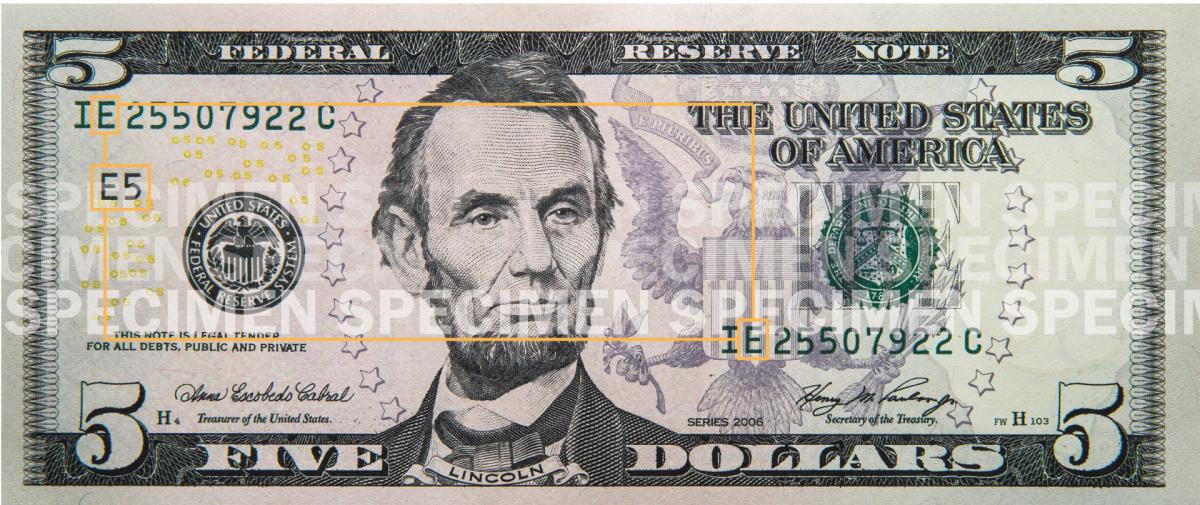
| INDICATOR | BANK | INDICATOR | BANK | INDICATOR | BANK |
|---|---|---|---|---|---|
| A1 | Boston | E5 | Richmond | I9 | Minneapolis |
| B2 | New York City | F6 | Atlanta | J10 | Kansas City, MO |
| C3 | Philadelphia | G7 | Chicago | K11 | Dallas |
| D4 | Cleveland | H8 | St. Louis | L12 | San Francisco |
For denominations $1 and $2, the note includes a seal that identifies one of the 12 Federal Reserve banks.
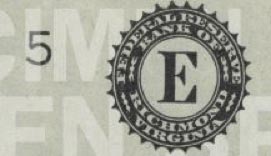
Note Position Letter and Number
For denominations $2, $5, $10, $20, $50, and $100, the note position letter and number indicates in which position on a plate a note was printed. It is a combination of one letter and one number and can be found on the front of the note.
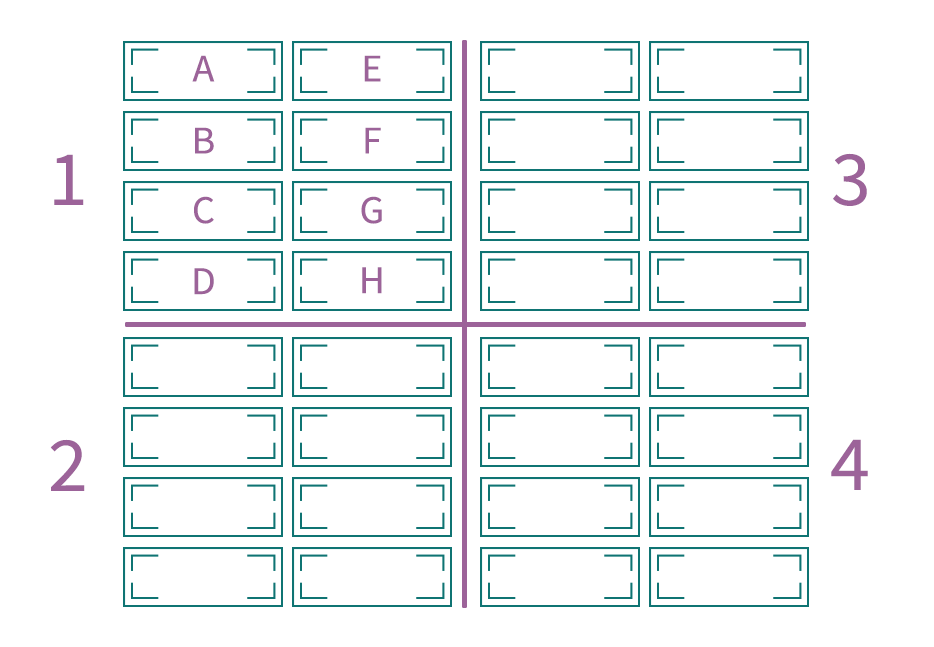
In 2014, the BEP began printing $1 notes on 50-subject sheets. For these larger sheets, the note position is identified by columns and rows rather than by quadrants. Note position identifiers on the 50-subject sheet ranges from A1 – J5.

Please view this video to learn more about the 50-subject production change.
Face and Back Plate Numbers
The face plate and back plate numbers identify the printing plates used to print each side of the note. The face plate number is found on the face of the note and the back plate number is found on the back.
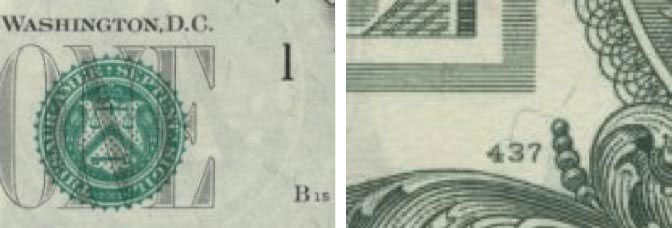
Federal Reserve notes printed at the Fort Worth, Texas, facility of the Bureau of Engraving & Printing include a small “FW” in front of the face-plate number.
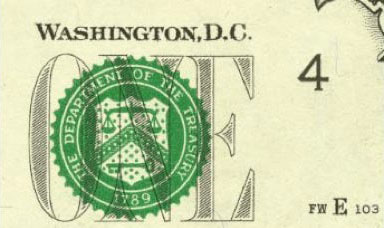
Treasury Seal
A green seal to the right of the portrait represents the U.S. Department of the Treasury. The design of the seal was changed to incorporate an English inscription and appears on all Federal Reserve notes of the 1969 series year or later.
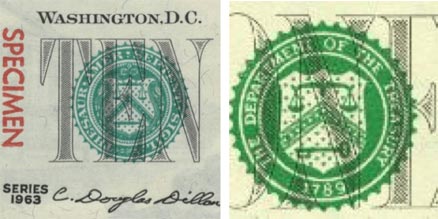

I have two consecutive bills missing 2nd printing in front pretty cool can you give idea where to sell or at least estimate worth
I have a 2013 Green Deal MG 00046699G darker discoloration in middle. Is it of any value it got a cool rating of 97.7 rare in number sequence. I would like to know the value. Thank you
I have a series of $1 star notes . Can’t find anything on them
K 00582347,48,49,50